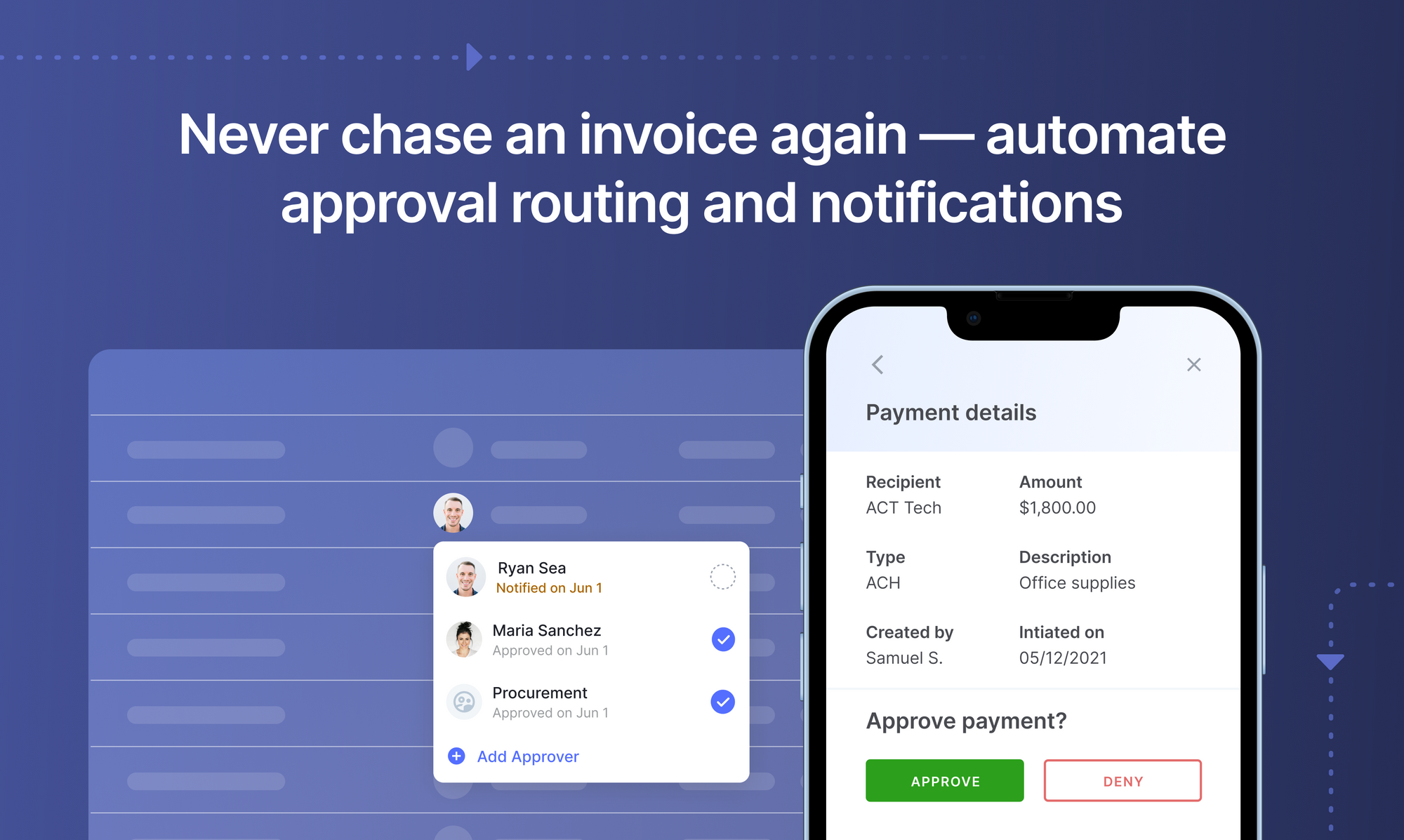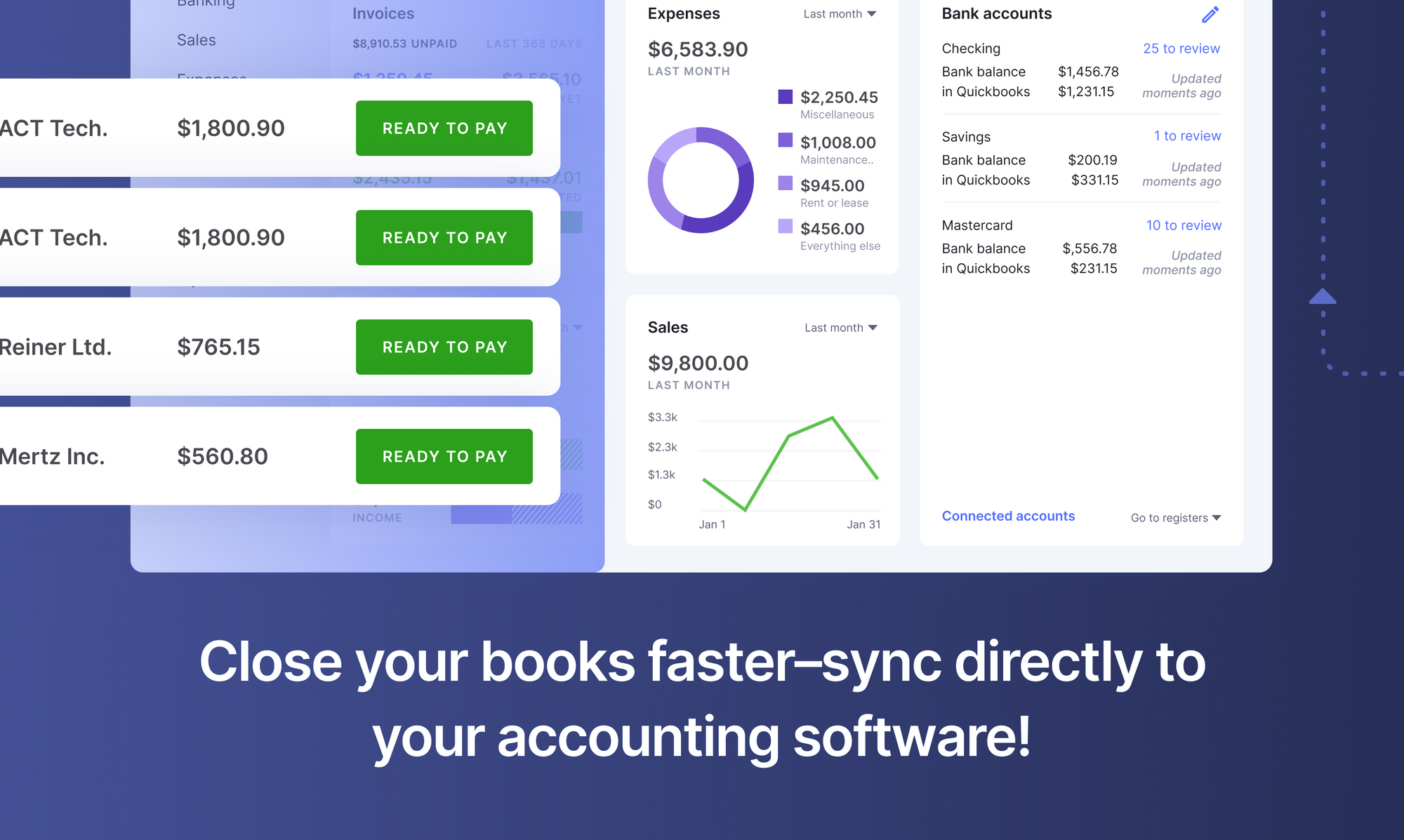
An important financial document that all businesses receive and must deal with, is the invoice. As an enterprise grows in function and value, it requires more and more products and services for its operation - stationery, office supplies, raw materials, housekeeping services, outsourced services, etc. The sourcing and procurement of these products and services results in the receipt of more and more invoices in the course of the company’s operations.
Invoice management is a critical internal business function related to a company’s procurement process. It encompasses the management and processing of invoices from vendors/suppliers. Also known as invoice processing, invoice management is the process by which businesses receive an invoice from a vendor, validate its legitimacy, pay the supplier, and record the payment. Good invoice management and Supplier or vendor payments can impact the profitability of a business just as much as revenue.
The automation of invoice management removes many of the bottlenecks associated with traditional manual invoice management processes. It streamlines the purchase process, enhances transparency of the invoice route, saves time and money, increases employee productivity, and improves Supplier and vendor relationships. Automated invoice management can help your business remain competitive and improve the bottom-line. Digital tools like Nanonets can help you ease into automation, and thus empower your employees so that they can work to their full potential on their core competencies rather than feeling wasted in performing the mundane repetitive tasks associated with invoice management.
Let’s learn more about invoice management and automation of the invoice processing steps.
The importance of invoice management
According to a survey by Billentis, the total number of invoices exchanged around the world exceeded 500 billion in 2019.
The survey also projected that about 70 invoices are exchanged per person per year throughout the world.
The organic annual growth of about 3% and the increasing use of authentication of customer data during the purchase processes are expected to quadruple the invoice volume by 2035.
The management of invoice includes:
- receiving the invoice from a vendor for supplies/services ordered
- validating the legitimacy of the invoice
- processing the payment at the appropriate time
- and recording the payment in company records.
Invoice management usually comes under the purview of the Accounts Payable Department and is part of the purchase-to-pay cycle. Invoice management is important for several reasons:
- Invoices are the basis for timely payment. Invoice management is important to prevent delays and errors in receiving or paying for goods and services.
- Invoice management keeps track of sales/supplies and prevents wastage and delays.
- Invoice management can help in regulating inventory.
- The data from invoice management can help in planning and reviewing financial and performance data of the company
- Eases tax documentation, audits and taxation activities.
Looking to automate your manual AP Processes? Book a 30-min live demo to see how Nanonets can help your team implement end-to-end AP automation.
Woes of traditional invoice management
In most companies, the accounts payable department manages invoices. In small establishments, one or two employees manage invoices and perform all the tasks in the invoice management workflow. They receive the invoice from the vendor, check it for correctness, authorize payment, pay the invoice, and record the transaction for posterity. While this process seems simplistic enough, there are hidden tasks related to the main tasks listed above:
- Vendor registration
- Vendor data validation
- Vendor record updates
- Tax form collection
- Screening of sanctions
- Support for a range of payment methods
- Currency conversion
- Payment reconciliation
- Tax reporting
Invoice management is further complicated by the fact that there are many types of invoices. Billentis provides two definitions for invoices:
- Invoices in the narrow legal sense: Bills/invoices with full content and authentication of issuer and receipt. Typically issued by accounting systems. Basis for electronic transmission and automated processing.
- Invoices in the broader legal sense: ‘Simplified low value’ bills/invoices without customer authentication. E.g., payment receipts, tickets, etc. Typically, anonymously issued by cash registers at points of sale. Not suited for automated electronic transfer and automated management.
Depending on the business competency and workstyle, various documents are classified as invoices, including the standard bill/invoice, credit notes, pro-forma invoice, time sheets, interim invoices etc. Thus each company must have a coherent and inclusive procedure for managing invoices, and as the scale of the business grows, manual management becomes more and more cumbersome.
Manual invoice management is ridden with the following woes:
Cost penalties and delays: Beyond the complexity of tasks, the costs involved in manual invoice management are large. The management of physical invoices includes capital costs such as paper and pens to postage and printer toner, storage costs, and processing costs. Intangible costs of invoice management include employee costs, error-correction costs and follow up costs.
PYMNTS.com reports that it costs $11.57 and takes 8.6 days to process a single invoice manually. Sterling Commerce puts the cost even higher – manual management of single invoice reportedly costs between $12 and $30. While this cost may not matter for high value products, they affect the cost margin for lower value products.
Lack of compliance and control: Another problem with manual invoice processes is that they are difficult to track and make it challenging to set up and follow internal controls. For example, it is important to save documents such as invoices for a period of time for accounting, taxing, and quality control purposes. When stored as paper files, these documents are not safe from physical accidents like termite attacks, moisture seepage, mistaken shredding, and ink-fading.
Errors and inefficiencies: A survey conducted by Sapio Research and Wax digital found that manual invoice routing overwhelms 82% of the accounts payable department because of the large volumes of invoices to be processed on a daily basis and the variety of formats they’re received in. The sheer quantum of work leads to data entry errors, exceptions, misplaced, or overlooked invoices, fraud, and delays in approval. A survey conducted on businesses that process >350,000 invoices/year, exceptions on manual invoices were the cause of 32% of all late payments and 36% of all supplier related phone calls.
Various surveys conducted by various organizations have shown the bottlenecks AP professionals find in invoice management processes [[data from here].].
Set up touchless AP workflows and streamline the Accounts Payable process in seconds. Book a 30-min live demo now.

The slow transition to automated invoice management
Automating the invoice processing process with invoice automation software has been the logical solution to the problems of manual invoice management. A 2021 survey on The How, The Why and The ROI of AP Automation finds the following reasons that companies want to automate their invoice management processes:
However, companies have been slow in the adoption of intelligent automation to manage invoices. A study conducted in 2010 called "e-Invoicing from a Buyer Perspective 2010," stated that despite companies being aware of the benefits of automation, the obstacles to achieving greater adoption included “insufficient business infrastructures among both buyers and suppliers, supplier resistance, inadequate funding and a perceived long learning curve”, a situation that is slowly changing now as more and more companies recognize the benefits of automating the invoice management process.
Book this 30-min live demo to make this the last time that you'll ever have to manually key in data from invoices or receipts into ERP software.

Automating invoice management
While automation of the entire invoice processing workflow can make the AP process completely paper-free, most organizations commonly automate the following specific tasks:
- Receiving purchase orders and supplier invoices: Invoices are usually received in various formats – as email attachments, as forms filled online, or as paper copies. The automatic detection of electronically sent invoices and extracting them from the sources (emails/forms etc.) is the first step in invoice management. Automation can ease this task. In the case of paper-based invoice, some human intervention is required to scan the invoice using OCR software.
- Extracting relevant data from the invoices and entering them into ERP systems: Since each invoice holds key data that are used in accounting resource planning, and decision-making within the business, accuracy in data extraction is essential. The data thus read from invoices are usually then transferred to ERP, accounting, or data analytics platforms used by the company for subsequent processing.
- Performing a three-way match between the invoice, PO and the receipt: Automated three-way validation automatically compares and matches records and makes decisions such as passing the transaction, flagging errors, or raising exceptions.
- Making digital payments: Automation enables choice of the best payment terms and timings to pay vendors(Supplier/vendor management). The transparency offered in terms of the payment terms and corporate liabilities, allows adjustments in the payment plan to benefit from early payment discounts, delaying payment until the last date, etc.
Benefits of invoice management automation
Automating the invoice management process leads to the following benefits:
- Consistent rapid processing of invoices
- Prevention of errors and loss of data
- Elimination of delays in payments and associated complications such as vendor relationship jeopardy, work pause etc.
- Rerouting of manpower on more rewarding tasks
- Maintenance of the supply chain movement
- Prevention of fraud
- Cost savings
- Greater visibility, control and compliance
- Eco-friendliness and avoidance of paper clutter
- Better document management and preservation
Nanonets for smart invoice management
Nanonets is an AI-based software that can be used to automate and streamline the invoice management of your business. The AI engine of Nanonets can be trained with actual invoices, without the need for coding, which makes it customizable to the company. The Nanonets engine also has built-in state-of-art algorithms and a strong infrastructure for multi-step invoice AP approvals. The Nanonets invoice processing software can be integrated with other systems such as the Mysql database, QuickBooks, or Salesforce and is platform agnostic. Nanonets is accurate and scalable, saves time and money for your AP department and supercharges your invoice management protocol, thereby strengthening vendor/supplier management.



